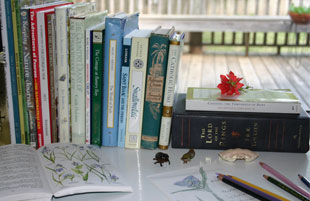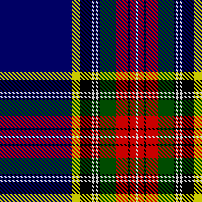cathhomeschool
Board Moderator


Texas Bluebonnets
Joined: Jan 26 2005
Location: Texas
Online Status: Offline
Posts: 7303
|
| Posted: May 04 2005 at 8:45am | IP Logged
|
 |
|
I enjoyed this fun article about math. I didn't have a link, so I'm posting the whole article with permission from Mary Owens.
---------------
Just Don't Tell Them It's Math: Fun Ways to Increase Your Child's Mathematical Thinking
by Mary Owens
<mary-mary@swbell.net>
Do you think math is boring? Totally left brain? Full of "drill and kill"? You're probably thinking arithmetic. Arithmetic is just one small branch of mathematics that deals with real numbers; counting, adding, subtracting, multiplying and dividing.
Higher mathematics is exciting, creative and very right brain. When we skip over higher mathematics in favor of arithmetic with our children, we're losing a chance to stimulate their mind, increase their intelligence and nurture their sense of wonder. While I'm not exaggerating, the following ideas won't necessarily make your child a mathematical genius. Not everyone is cut out for that. But you can still have fun and help your child along the road to a greater understanding and appreciation of mathematics.
Don't bother with lesson plans. There are none. This is just play- good, old fashioned, self-directed play- although parents can and should play along. Activities such as these lay the foundation for mathematical thinking and formal lessons remove discovery and exploration, two of the most important aspects. And please don't try explain what's going on either. Mathematical learning, thank goodness, takes place even in the absence of mathematics terminology.
1. Blocks such as Legos, tanagrams, pattern blocks and building blocks help with many areas of mathematical reasoning including sequencing, patterning, geometry and estimation. All that from creating patterns or building a neat castle for little action figures. It couldn't be any easier. And remember watching a tower tumble down is just as educational as building a sound structure.
2. Music- Music is math! From fractional notes to octaves, chords, rhythm and transposing, it's all math. Listening to music, moving to music, reading music, watching how musical instruments work and music theory all give insight to mathematical concepts. Look up biographies of famous mathematicians throughout history and you'll be surprised at how many were accomplished musicians. Coincidence? Not at all.
3. Spirograph- This toy, created by an engineer, produces a geographic figure called a hypotrochoid. But remember, we don't need to worry about terminology so just go ahead, have fun and make some really awesome designs. Use the different wheels, change where you put the pen and you'll see the results of the mathematics.
4. Origami- Origami is so full of math it has it's own theorem, the origami theorem, which states that every flat-foldable crease pattern is 2-colorable. Need I mention the importance of computational origami in today's world for items such as airbags? Someone has to figure out how to fold them and that someone is a mathematician. Besides the flapping cranes and jumping frogs are just plain cool.
5. Juggling combines abstract patterns, number theory and time sequences. There is even a formula for juggling. I'm told that anyone with enough time and patience can learn to juggle so why not give it a try? Besides it's a great way to earn money for college as a past president of the American Mathematics Association did.
6. Math Stories- Did you know there are whole sections in libraries and bookstores devoted solely to mathematics? And we're not talking about textbooks and workbooks or the Cheerios counting book. The selection includes biographies, essays, storybooks and novels. My favorite are the storybooks. Some of these like The Number Devil or The Dot and the Line have obvious math themes. Others are so skillfully crafted that the math is hard to detect (does Alice in Wonderland ring a bell?).
7. Games- Any type of game that uses strategy uses mathematics. Chess teaches calculation, concentration and spatial relationships. According to mathematician G.H. Hardy, "Chess problems are the hymn-tunes of mathematics" to which Bruce Schechter added "the game of Go is a cantata". Perhaps that makes Mancala the folk song of mathematics and poker and pool the bawdy ballads. Whatever they are, these games along others such as Rush Hour, Master Mind and Dominoes can't be beat for increasing mathematical reasoning.
8. Knots- Though mathematical knots are different from the knots we use in everyday life, tying knots was the beginning of Knot Theory, the mathematical study of knots. That would be the mathematicians right brain kicking into gear. In knot theory, a knot is a mathematical object just like a number. There are even prime knots, knots that can not be made by combining two simpler knots. That's math!
9. Codes- Yes, that's right- good old fashioned secret codes or cryptography as it's known in the mathematics world. A code is just a collection of algorithms, a way to solve mathematical problems. As you work at deciphering the code step by step you're solving a problem in a very mathematical way.
So there you go- fun, games and lots of great math. Just don't tell them.
Copyright 2004 Mary Owens (mary-mary@swbell.net). Used with permission from the author.
__________________
Janette (4 boys - 22, 21, 15, 14)
|


 Topic: Article on fun ways to learn math
Topic: Article on fun ways to learn math









